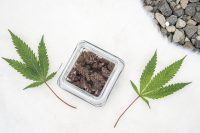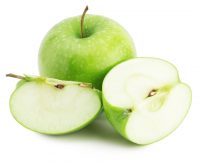This three-part series will provide an in-depth look at intellectual property (IP) protection that is available for innovative and new varieties of cannabis. In this first installment, we will examine the reasons why cannabis breeders should adopt a strong IP strategy and look briefly at the types of IP that they should be considering. In the second and third pieces, we will look at the types of IP protection that can be used to protect innovative cannabis varieties and the unique IP issues the cannabis industry faces right now. Taken together, these articles will provide insight into IP strategies that cannabis breeders and growers can employ today to help prepare for the day that cannabis becomes legal nationally.
Why should I use IP to protect my cannabis varieties?
First and foremost, as the cannabis industry continues to move from a small, tight-knit community of breeders and growers into a ‘big-business’ industry, IP is the only way for breeders to protect the investment of time, energy and money that they put into developing new and innovative strains of cannabis. At a recent cannabis growing conference, one sentiment felt among numerous breeders was a feeling of frustration– stemming from the fact that they had spent many years developing new varieties of cannabis and, now that the industry is exploding, they are not getting recognition for all that effort. The way to avoid this issue is to protect novel varieties with IP to ensure that you are given proper credit for all of your hard work.
Moreover, an examination of industries that have strong similarities to the cannabis industry, such as other plant-based industries and ‘vice’ industries, provides compelling evidence that IP will become a main driving force in the cannabis industry as it continues to mature. For example, the fruit and hops industries have been relying upon strong plant patent and trademark protection for many years. The extremely popular Honeycrisp apple is a patented variety and the Amarillo hops variety (officially called ‘VGXP01’) is protected by both a U.S. Plant Patent and a federally registered trademark. Similarly, the alcohol and tobacco industries rely upon strong trademark and branding strategies, with many consumers being extremely brand-particular.
Additionally, there is strong evidence that the cannabis industry is primed for intellectual property protection. Since long before cannabis was legalized, consumers who were buying cannabis on the black market often sought out a particular variety from their dealer, something that becomes more prevalent as the industry continues to mature.
Why is now the time to think about IP?
First, the relevant governmental bodies have now provided some clarity as to the types of IP protection that can, and cannot be obtained for cannabis. For example, it is now clear that the U.S. Patent and Trademark Office (USPTO) will issue patents that cover new cannabis plant varieties and related innovations, such as novel growing methods. In fact, the first U.S. Plant Patent that covers a novel cannabis strain, called ‘Ecuadorian Sativa’, issued in late 2016.
Similarly, though federal trademark registration is not currently available if the product being protected is a cannabis product that is illegal under federal law. Federal trademark registration may be available to protect products related to the cannabis industry that are not themselves federally illegal (e.g., grow lights, fertilizer, etc.). Many states with legalized cannabis will grant state trademark registrations for cannabis products regardless of whether the products are viewed as illegal under current federal law. With this increased clarity, companies can now begin to formulate a comprehensive IP strategy that ties together the various types of IP protection.
Additionally, cannabis breeders and growers should look to adopt an IP strategy now because there are certain time bars that exist that may result in loss of rights if they wait. For example, as we will discuss in Part 2 of the series, patent protection can only be sought if the variety to be patented was not sold, offered for sale, or otherwise made publicly available more than one year before the patent application is filed. So if a breeder chooses to wait to seek patent protection for a new variety, the ability to ever get that protection may be lost.
The bottom line is that, to solidify their place in the market, cannabis breeders and growers should be formulating an IP strategy sooner rather than later. Those forward-thinking growers and breeders that adopt a comprehensive IP strategy up front will gain a distinct competitive advantage over competing growers and breeders down the road – an advantage that will become even more important if and when large corporations begin to move into the cannabis space. Those companies that have strong brands in place will be better equipped to survive and thrive in the face of pressure from legal teams at larger companies.
The next two installments of this series will examine the specifics of the types of IP protection that can be sought and the unique issues that the cannabis industry faces with each of them.
Legal disclaimer: The material provided in this article is for informational purposes only and not for the purpose of providing legal advice. The opinions expressed herein are the opinions of the individual author and may not reflect the opinions of the firm or any individual attorney. The provision of this information and your receipt and/or use of it (1) is not provided in the course of and does not create or constitute an attorney-client relationship, (2) is not intended as a solicitation, (3) is not intended to convey or constitute legal advice, and (4) is not a substitute for obtaining legal advice from a qualified attorney. You should not act upon any such information without first seeking qualified professional counsel on your specific matter.






















 ASTM International meets the World Trade Organization (WTO) principles for developing international standards, and maintains the attributes outlined in the
ASTM International meets the World Trade Organization (WTO) principles for developing international standards, and maintains the attributes outlined in the 








 In reality, according to a
In reality, according to a 







